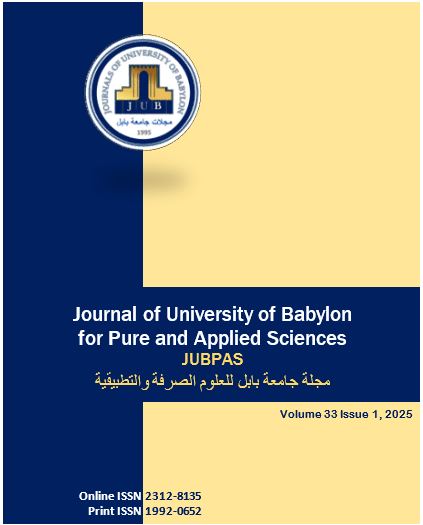Statistical Study of Bacterial Urinary Tract Infections for the Period 2019 to 2023
Main Article Content
Abstract
The current review analyzed bacterial urinary tract infections (UTIs) in Iraq from 2019 to 2023 by highlighting the prevalence of gram-positive and gram-negative Bacteria among UTIs. Escherichia coli was the main pathogen, with 1430 bacterial isolates from UTI cases, followed by Klebsiella pneumonia with 721 isolates, and Pseudomonas sp. with 182 isolates. The current study showed that the gram-positive bacteria, represented by Staphylococcus aureus, were the dominant pathogen in UTI cases, with 229 isolates. The distribution of these pathogens varied annually, indicating changes in infection trends. The dominance of E.coli and its multi-drug resistance were consistent with global findings, confirming its clinical importance. The study highlighted other bacterial species responsible for UTIs, which were Proteus sp., Enterobacter sp., and Enterococcus sp., confirming the complexity of the pathogenesis of UTIs. This statistical study provides critical insights into bacterial epidemiology and guides future research for the management of UTIs in Iraq.
Conclusions: The present review provides a comprehensive analysis of bacterial UTIs in Iraq from 2019 to 2023, emphasizing the prevalence and distribution of pathogens. E. coli was the most commonly causative agent, followed by K. pneumonia and Pseudomonas sp., with significant multi-drug resistance patterns noted, mirroring global trends. Gram-positive bacteria, S. aureus was predominant. Variability in pathogen distribution highlights evolving infection trends and complexities in UTI pathogenesis. The findings underscore the critical need for ongoing epidemiological surveillance and antibiotic stewardship to manage UTIs effectively and mitigate resistance. This data is pivotal for improving healthcare strategies and patient outcomes in Iraq.
Article Details
Issue
Section

This work is licensed under a Creative Commons Attribution 4.0 International License.
